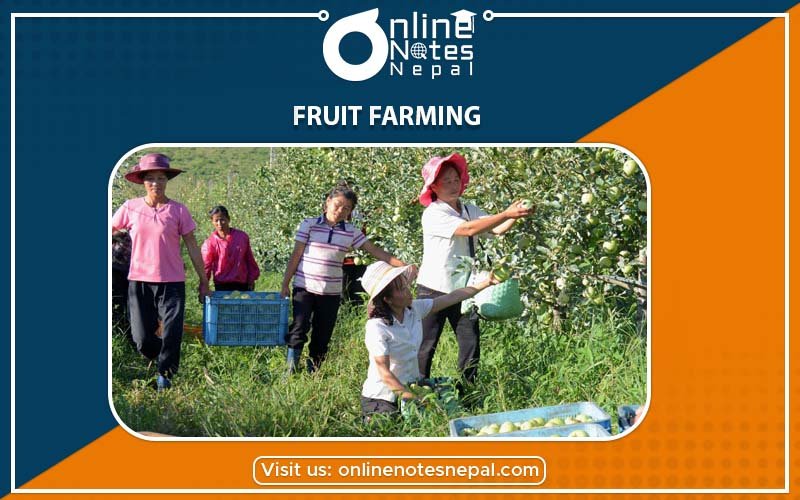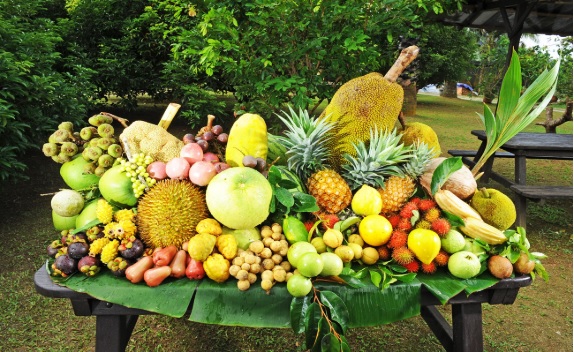Published by: BhumiRaj Timalsina
Published date: 28 Jan 2022

A specialized branch of agriculture which includes vegetable farming, fruit farming and floriculture is known as horticulture. In this lesson, we are going to learn about the importance of horticulture and its role in the economic development of Nepal.

A place where young plants are produced through different ways is called a nursery. The main work of nursery is to supply young plants and seeds for cultivation purpose for both fruits and vegetables. A nursery might be big or small depending on the types of plants one wish to grow. Mostly small kinds of nursery are established for the household purposes which has a limited space.
A nursery is important in different ways. Some of its importances are listed below:
The nursery is one of the affordable businesses which can be started by a middle-class family. This is a profitable business and also provides employment opportunities. This business can be started in the limited or small land with a small amount of money.
Although the production capacity is low, the local varieties can best survive in local environment conditions. Local varieties are traditionally prevailing varieties. There have been recently developed imported varieties. Their production capacity is high and they are less tolerant to the local environmental conditions. Altitude variation in Nepal ranges from 60 m to 8848 m. Due to the wide range of altitude, we have different climatic conditions. Fruits are grown here mostly for domestic consumption.
Some of the varieties of apple and mango are described below:
This fruit can be grown throughout mid and high mountainous area from Central to the Far Western Development Region of Nepal. The dry and semi-dry climate is more suitable for growing apple. The main apple varieties grown in the extremely cold climate are Red Delicious, Royal Delicious, Golden Delicious, Golden Spur etc. The species suitable for average cold climate are Red June, Cox Orange, Pippin and the species grown in mild cold climate are Anna, Vered, Tropical Beauty etc.
One of most common fruits found in Nepal is mango. It is mostly found in the Terai region where the weather is warm and suitable for its growth. Some of the famous kinds of mangoes are Gopal Bhog, Bombay, Culcuttia, Kali, etc.
Fruits become damaged due to weather changes. Different fruits have to be prevented by using different kinds of techniques. Some of the techniques are mentioned below:
Harvesting fruit in time has great values. Different fruits have different times of harvesting. Fruits have to be harvested at appropriate times. There are certain factors that can be observed in order to know the appropriate time. For example, the fruits which turn green to yellow are sour to sweet. We can also experience that kind of changes in our surrounding areas.
Fruits should be harvested in a safe way. One of the safe ways of harvesting fruits is hand picking, which is followed by several techniques such as the use of secateurs, knife, ladder, etc. Sometimes wild and berry types of fruits are also harvested by beating with sticks and shaking branches of trees. A safe method of harvesting is pole harvester. This can be used in picking up fruits from trees.
It is prepared with the help of simple local material which consists of a 2-3 m size of adry bamboo pole with about 2.5 cm diameter, a basket or a sack with about 30 cm wide mouth which can be made like a basket with a piece of black pipe or flexible bamboo stick and a cycle. We can use this pole harvester for those fruits which we cannot catch or access directly or difficult to take.
Those fruits which have been harvested are packed in a bag and placed in appropriate storing kits and sent to the market. To transport to a distant market, fruits are packaged in corrugated paper boxes or wooden box placing some insulating materials like dry leaves, wooden chips or tissue papers. But, before packing of goods, firstly fruits are graded generally in four lots; large, medium, small and damaged. Depending on the type of fruit crops and economy required, wooden boxes, bulk bins are some of the packagings and holding materials used during the transportation of fruits from the field to the market.
Fruits have to be protected in their every growing stage. They have to be protected from adverse environment factors and pests from the very young age. Afterward, the plants become strong and matured for the local environment. Fruits have to be protected from environment conditions like wind, rain, etc.
Fruits should be protected from the adverse weather, from diseases and from the insects which may destroy the whole plan. To prevent from those kinds of diseases and insects, we should use the bio-friendly chemicals to plants which can prevent plants and also do not harm the consumers of those fruits. Some of the conventional methods are listed below: